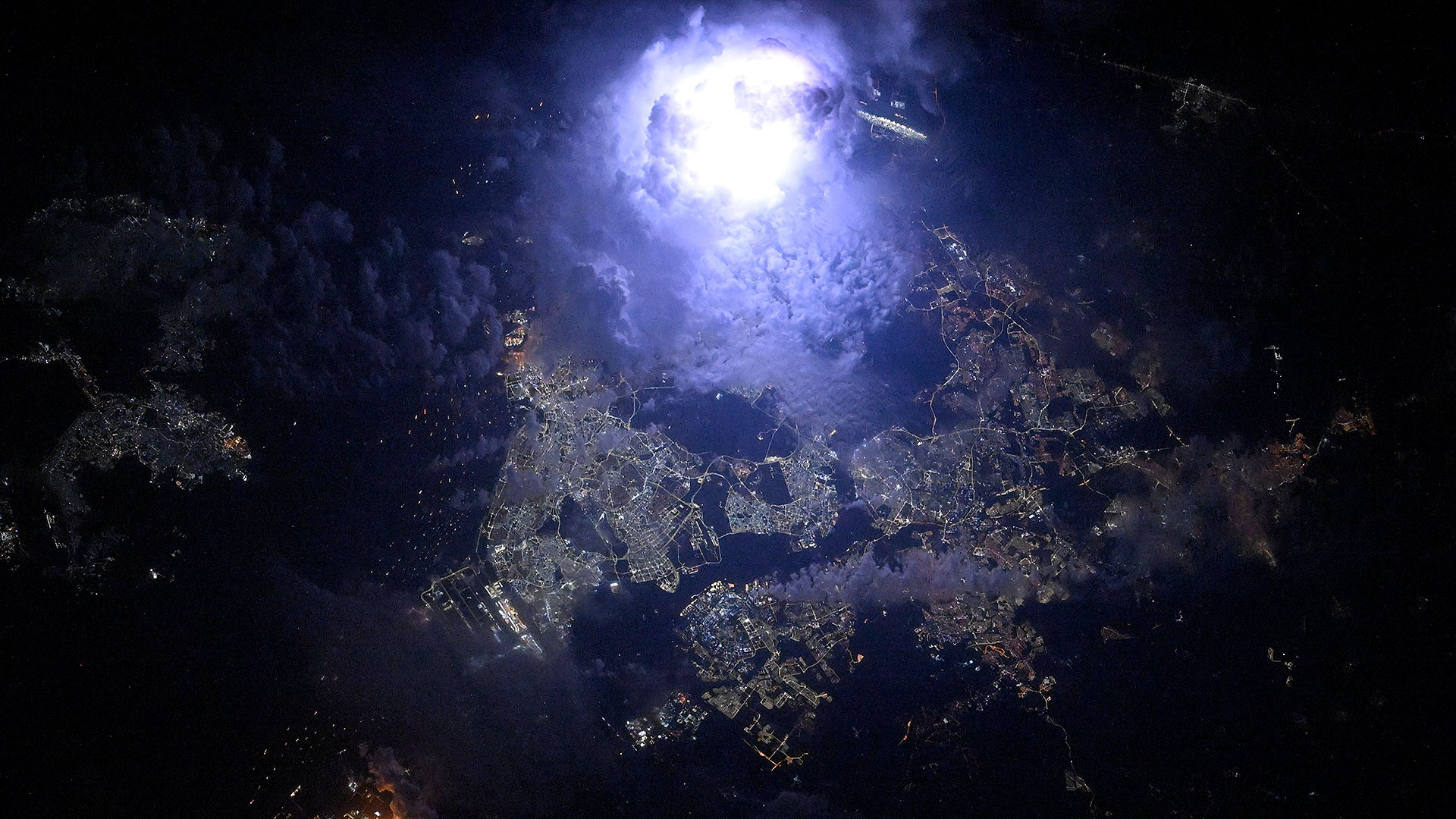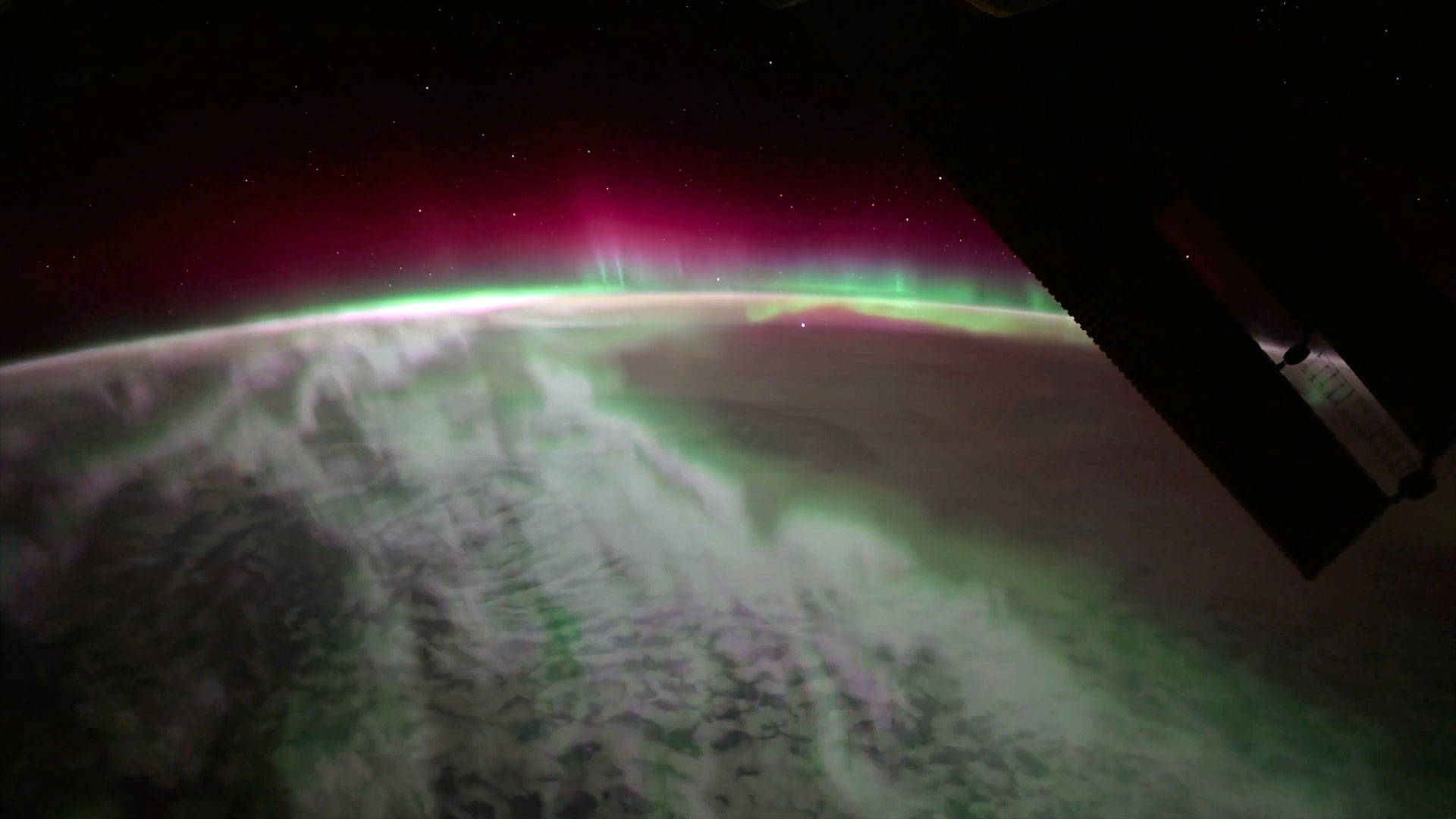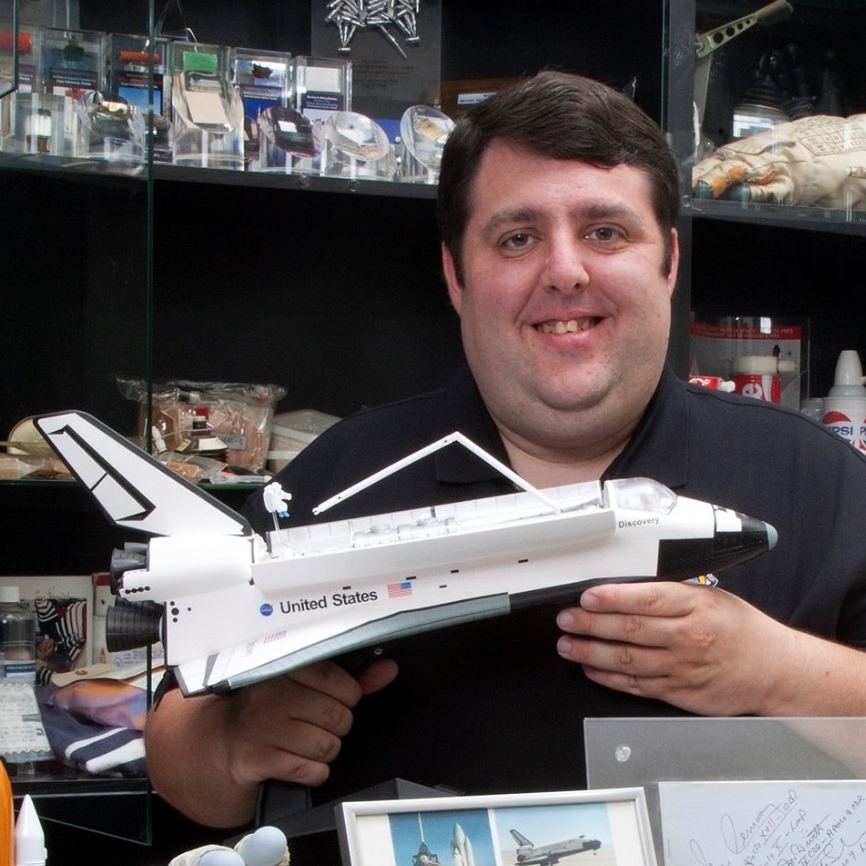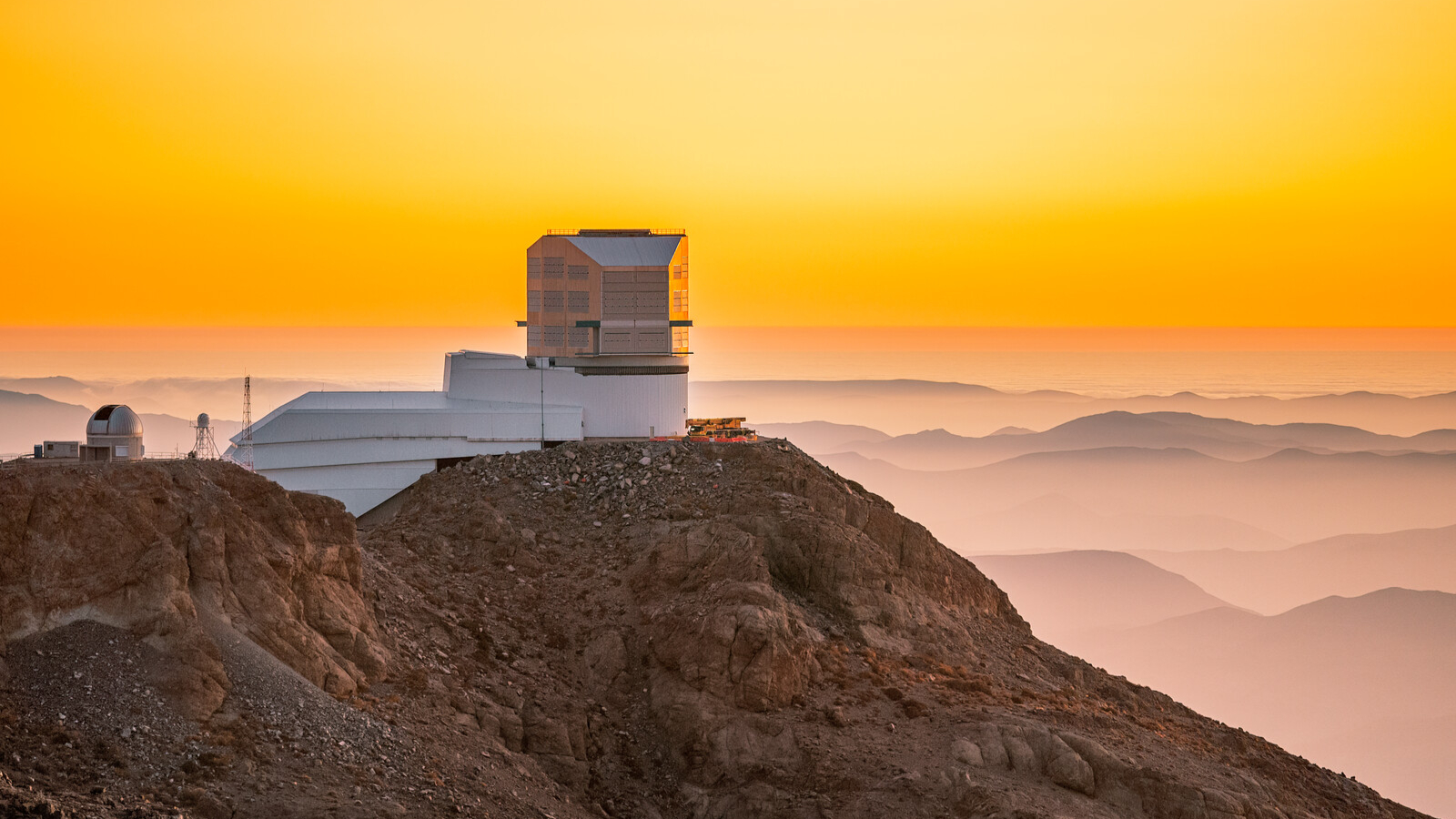When it comes to auroras, pink is the new white, astronaut says | On the ISS this week June 16 - 20, 2025
A look back at the week's activities for the Expedition 73 crew.

With the arrival of a visiting crew still delayed, science and maintenance work on board the International Space Station continued to fill the Expedition 73 crew's week, along with time for Earth observations and an interview for a podcast.
Orbital observation
Is it a green aurora with pink stripes, or a white aurora with green stripes? That, apparently, became the question on the International Space Station, at least for Expedition 73 flight engineer and NASA astronaut Anne McClain.
"So, when I took this aurora [video], at first I thought that my settings were not correct because the aurora appeared white. I thought maybe the ISO was off, or I picked the wrong lens. Turns out, what I thought was white is actually light pink, and this led me down a path of learning," wrote McClain on Tuesday (June 17) in a social media update from orbit.
As McClain found out, the color of aurora depends on several different factors, including the molecule hitting Earth's atmosphere, the nature of the impact itself, the density of the atmosphere at the point the collision occurs and the altitude of the impact.
"Green is the most common aurora color, and it occurs when the electrons hit oxygen molecules between 60-150 miles [100-240 kilometers] altitude," wrote McClain. "If the solar particles hit oxygen but at a higher altitude, above 150 miles [240 kilometers], the resultant color is red. This only happens under intense solar storm activity because of the lower density of atomic oxygen at higher altitudes."
And as McClain discovered, the aurora she recorded "was very pink-hued!"

Science status
Among the research that was conducted aboard the space station this week was:
Breaking space news, the latest updates on rocket launches, skywatching events and more!
REALM — Expedition 73 flight engineer and NASA astronaut Jonny Kim installed tags around the space station as part of the RFID-Enabled Autonomous Logistics Management demonstration. REALM uses a free-flying robot named Astrobee to track tagged equipment and cargo, potentially making it quicker and easier for crew members to find the items they need when they need them.
Bio-Monitor — Kim also spent two days this week continuing a test with a Canadian-built vest that enables data collection about the physiological status of the wearer, including heart rate, blood pressure, and body temperature. Kim assessed the comfort of the apparatus during the 48 hours he wore it.
Ring Sheared Drop — Fellow NASA astronaut and flight engineer Nichole Ayers continued her work from last week by changing out protein samples and adding new test cells to an experiment testing surface tension as a way to contain liquids and observe proteins without the liquid making contact with the containers' otherwise solid walls.
Sergey Ryzhikov and Alexey Zubritskiy, flight engineers with the Russian space agency Roscosmos, used acoustic sensors affixed to their necks as part of a respiratory study based on the sounds they make when exhaling.
Station keeping
The crew also devoted time to maintaining the space station's systems, including:
Window inspections — Working inside the U.S. Laboratory "Destiny," McClain examined and photo-documented the condition of each of the module's windows. Later, she did the same inside the station's Cupola, inspecting each of its seven windows.
Expedition 73 commander Takuya Onishi also worked on windows, but inside JAXA's (Japan Aerospace Exploration Agency) Kibo module, including the glass portholes in the Electrostatic Levitation Furnace, which is used to expose suspended samples to high temperatures.
Cranks, handles and seals — Onishi spent part of this week cleaning the seals on the hatches between each of the U.S. operating segment modules, as well as removing dirt and dust from the handles on each hatch.
Meetings — Onishi, McClain, Ayers and Kim spoke with Joe Acaba, chief of NASA’s astronaut office, as well as their expedition's lead flight director to go over their upcoming activites and plans for the station.
Ryzhikov and Zubritskiy also searched the Zvezda service module for additional stowage space. Together with Kirill Peskov, the three Russian cosmonauts also worked on cleaning and caring for two Orlan spacesuits to be used on future spacewalks.
Astronaut activity

On Tuesday (June 17), Ayers took part in a podcast interview for the U.S. Air Force, Academy Association of Graduates. A newly promoted lieutenant colonel in the Air Force, Ayers described seeing Earth for the first time in space.
"It was one of the most amazing things I have ever seen," she said. "And then seeing Earth from the Cupola and the lab window here, you don't see country or state lines on Earth. It is not like each state has a different solid color. There is just geography and just terrain, so you get to learn the world all over again in terms of colors and textures and geography and water."
Ayers said she has come to see our planet as being "so fragile."
"It has really made me want to take better care of this Earth and I when I get home, I want to do things just a little bit better and take that extra step," said Ayers.
Waylaid visitors
A second week went by without the expected and now delayed arrival of Axiom Space's fourth visiting crew.
Per the last update from NASA on Thursday (June 19), a new targeted launch date for the Ax-4 crew is expected "in the coming days." NASA is taking the additional time to analyze a leak repair on the Russian side of the space station.
Axiom Space's Ax-4 commander Peggy Whitson, a retired NASA astronaut, remains ready to launch with ISRO (Indian Space Research Organisation) astronaut Shubhanshu Shukla, ESA (European Space Agency) project astronaut Sławosz Uznański-Wiśniewski of Poland and Tibor Kapu of Hungary.
By the numbers
As of Friday (June 20), there are 7 people aboard the International Space Station: commander Takuya Onishi of JAXA, Anne McClain, Nichole Ayers and Jonny Kim of NASA and Kirill Peskov, Sergey Ryzhikov and Alexey Zubritsky of Roscosmos, all flight engineers.
There are two docked crew spacecraft: SpaceX's Dragon "Endurance" attached to the forward port of the Harmony module, and Roscosmos' Soyuz MS-27 attached to the Earth-facing port of the Prichal node.
There are also two docked cargo spacecraft: Roscosmos' Progess MS-29 (90P) attached to the space-facing port of the Poisk module and Progress MS-30 (91P) attached to the aft port of the Zvezda service module.
As of Friday, the space station has been continuously crewed for 24 years, 7 months and 19 days.
Join our Space Forums to keep talking space on the latest missions, night sky and more! And if you have a news tip, correction or comment, let us know at: community@space.com.

Robert Pearlman is a space historian, journalist and the founder and editor of collectSPACE.com, a daily news publication and community devoted to space history with a particular focus on how and where space exploration intersects with pop culture. Pearlman is also a contributing writer for Space.com and co-author of "Space Stations: The Art, Science, and Reality of Working in Space” published by Smithsonian Books in 2018.In 2009, he was inducted into the U.S. Space Camp Hall of Fame in Huntsville, Alabama. In 2021, he was honored by the American Astronautical Society with the Ordway Award for Sustained Excellence in Spaceflight History. In 2023, the National Space Club Florida Committee recognized Pearlman with the Kolcum News and Communications Award for excellence in telling the space story along the Space Coast and throughout the world.
You must confirm your public display name before commenting
Please logout and then login again, you will then be prompted to enter your display name.
